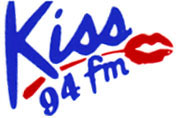 In the early 80s, Gordon Mac was the resident DJ at South London club Kisses and could also be heard on pirate station JFM. By the summer of 1985, JFM and many of the other big soul pirates of the early 80s had closed down leaving a gap in the market. Gordon Mac and his friends; Tosca, Pyers Easton and George Power decided to fill that gap.
In the early 80s, Gordon Mac was the resident DJ at South London club Kisses and could also be heard on pirate station JFM. By the summer of 1985, JFM and many of the other big soul pirates of the early 80s had closed down leaving a gap in the market. Gordon Mac and his friends; Tosca, Pyers Easton and George Power decided to fill that gap.
Kiss FM made its first broadcast at 9:30am on the 7th October 1985 on 94.0 FM. This was a bad time to be starting a pirate station as the authorities were in the middle of a crackdown. Kiss tried to operate 24/7 from day one, but suffered many raids, which caused the station to disappear on the 11th December.
It was the 22nd March 1986 before they were heard again, this time just broadcasting at weekends. The next weekend, 29th March they moved to 95.3 FM and slowly began to build an audience. The decision to just broadcast at weekends was a good one, as Kiss had fewer raids than other stations still attempting 7 days. In August 1986 they moved back to 94.0 FM.
Another new station launched in November 1986 called WBLS. They had an impressive DJ line up including Tim Westwood, Judge Jules, Jazzie B and Jay Strongman. WBLS had problems straight away from both the DTI and other pirates. They were gone by Christmas and their DJ’s eventually joined Kiss.
Following the success of Kiss and the other pirates, the legal stations in London started adding more dance and soul shows. This included Tim Westwood joining Capital. To counteract this, in late 1987 Kiss increased its broadcast hours to start at midnight Friday. They also formalized the business side of the station with the forming of a new company called Goodfoot Promotions. This was mostly owned by Gordon Mac, but shares were also held by some other members of the team.
The station was gradually getting bigger, more professional and involved in more aspects of the growing club scene. The hugely successful Kiss nights were launched at the Wag Club. These included the first ever Acid House party, an idea put forward by Kiss DJ’s Colin Faver and Danny Rampling. These nights gave the station a credibility boost and the station management, the team of DJ’s and an army of helpers took the station forward through a combination of grim determination and clever marketing.
In the 1987 London Evening Standard readers poll best radio station category, Kiss came second behind Capital at number 1 and Radio 1 at number 3. Encouraged by this, the station started aggressively going after more advertisers. Merchandise was produced and broadcast hours were again increased starting 7 am on a Friday through to 1 am Monday. At its peak the station attracted a huge following, thought to have been in the region of 500,000 listeners.
On the 2nd November 1988 the IBA said they were to offer some new radio licenses for London. Pirates could apply, providing they closed by the end of the year. Kiss decided to comply with this and closed on the 31st December 1988 so they could apply for a license.
Despite colossal public support, the license was awarded in July 1989 to Jazz FM. However, due to the huge interest in licenses in London, the IBA said that more frequencies could be made available. Kiss made another application, and this time Kiss and its loyal army of listeners, were rewarded. The station re-launched as a legal station on 1 September 1990 from its studio and offices located on the Holloway Road.
The publishing company EMAP were shareholders from day one, but took full control in 1992. Gradually the original team left and the station moved to a more mainstream format.
Grant Goddard has published his account of the Kiss FM story in a book, which is available from most book stores and on-line:
Kiss FM – From Radical Radio To Big Business by Grant Goddard ISBN 0956496318
More on Kiss FM can be found on these sites:
Downloads
To download, right click and ‘Save As’
Artwork
Newspaper Cuttings
Audio
|
40 mins
|
|
|
45 mins
|
|
|
45 mins
|
|
|
45 mins
|
|
|
39 min
|
|
|
79 mins
|
|
|
46 mins
|
|
|
54 mins
|
|
|
93 mins
|
|
|
47 mins
|
|
|
46 mins
|